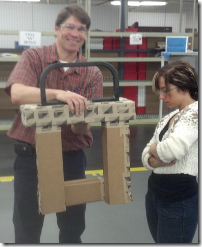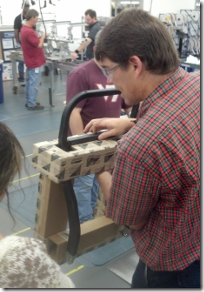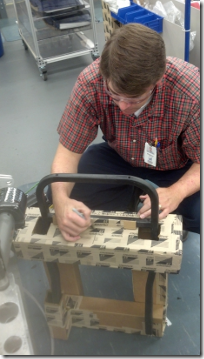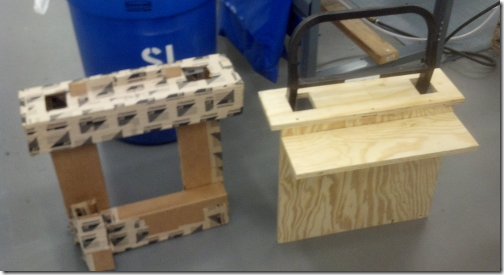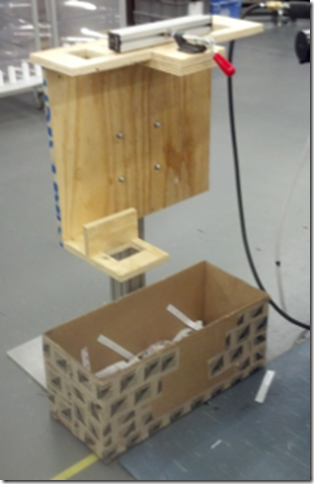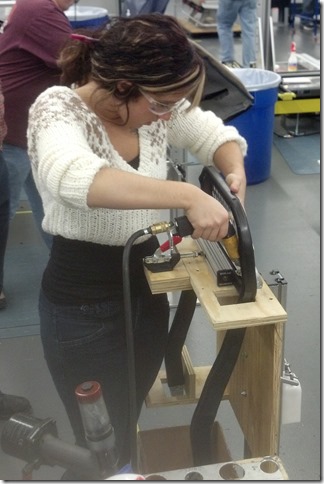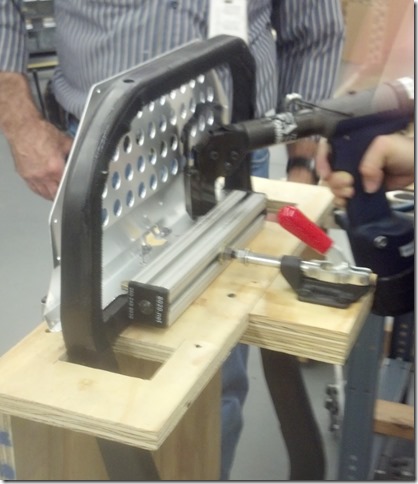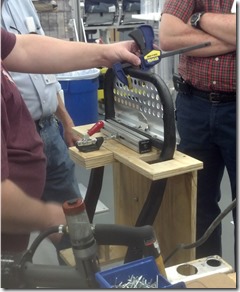We had five sequential operations. Although the lowest repeatable times for each were well within the planned / target cycle time, there was a lot of variation.
Though Operation 3 was working pretty continuously, Operations 4 and 5 (downstream) were getting starved on occasion, and the empty “bubble” was working its way to the output. The exit cycles, therefore, were irregular enough that they weren’t making rate.
The team set their target to stabilize Operation 3, with the expectation that doing so would smooth out the overall exit cycles.
To that end, they went back and started to study Operation 3 in a little more detail to better understand the obstacles that were impacting the Team Member’s ability to complete the work smoothly.
Then a wrinkle – a different team member was now doing the work, and his cycles were faster.
This actually was an opportunity. Why is one Team Member faster than another?
Their hypothesis was that the faster Team Member had some knack or technique, that enabled him to perform more consistently. And indeed, he did have a few tricks.
So the first experiment was to capture this work cycle in a Job Breakdown, then see if using Job Instruction and teaching it to the first Team Member they could duplicate the results of the second.
Then another wrinkle. The first team member was back on the job. Armed with the knowledge gained by breaking down the steps, key points and reasons for Team Member #2, they took more baseline data from Team Member #1 to set up their experiment.
…only to discover that Team Member #1 was also doing things that #2 didn’t do.
One of those things was unbending a part that was sometimes being bent by an upstream operation.
It seems that #2 was just passing those along as he got them. With that background, the conversation went something like this:
“What obstacle are you addressing?”
“The manual rework in Operation 3 is adding variation and extending his cycles.”
“What experiment are you running next?”
“We think the jig being used in Operation 1 is a bit undersize, allowing the part to deform. We are going to adjust the jig to the proper size.”
“What do you expect from that?”
“We expect to eliminate bent and deflected parts, and see more consistency in Operation #3’s cycles.”
Then they tried it. Skipping ahead a bit:
“What actually happened?”
“The parts are now more consistent, and there Operation #3 has a lot less variation, and is running closer to the planned cycle time… except that now he is waiting on parts from the upstream operation.”
“Huh. What is happening there? What did you just learn?”
“Well, it looks like Operation #3’s variation was masking inconsistent delivery from Operation #2. That team member is operating in small batches, then turning and delivering 3-5 parts at a time. When there was a lot of variation in Op #3, those parts were kind of buffering everything. Now he is working more consistently and faster, and ends up waiting on parts.”
“Because of the layout, the Operation #2 Team Member has to turn to his left and pass the parts behind him. He said he batches so he doesn’t have to turn so often. So what we are thinking is we want to…”
“Hang on, I want to stick to the structure so you guys can practice hearing and responding to it… So – what is your next step?”
“We talked to the team members, and they all agree that if we straighten out that bend in the layout, this will be a lot easier on them, so we are going to do that during the lunch break.”
“And what do you expect from that?”
“Operation #3 will get his parts one-by-one, as they are ready, and won’t have to wait on them.
“Great, so when can we see what you have learned?”
“Give us about 30 minutes after lunch break is over.”
You can probably surmise that things smoothed out a bit.
Then they went back to capturing a hybrid of the best practices of both operators in a job breakdown. At this point, the Team Members were genuinely interested in how they were doing, and both were quite open to learning the “tricks” of the other, so “Get the worker interested in learning the job” had pretty much been done.
A lot was learned over a few hours.
Reflection:
The “real world” is often quite a bit messier than the real world. There was actually a lot more dialog than I reconstructed here to keep the “learners” on track and focused on their stated target vs. resorting to an action of “improvements.”
In addition, merely beginning to work on one obstacle revealed enough information that they were dealing with a different underlying problem.
At another point in the week, they also believed they saw a need for more consistent part presentation. I happened to agree with them, but…
when pressed for what result they expected, the initial response was “The parts will be consistently presented.”… but what does that have to do with your target?
That was tough because, at the time, they were looking at the cycles of the 2nd operator that were, actually, pretty consistent, and lost sight of the fact that they were working on reducing the overall variation of output from that position.
They had a very hard time articulating why consistent part presentation would address the issue, even though they knew it should.
I think this is the result of years of conditioning that the “tools” – such as consistent part presentation – are good for their own sake, without really examining the underlying problems and causes that are being addressed.
If we lean practitioners are scratching our heads wondering why people don’t see this stuff helps, it would be a lot easier to deal with if we could point to the issue being addressed at the moment.
More tomorrow.
